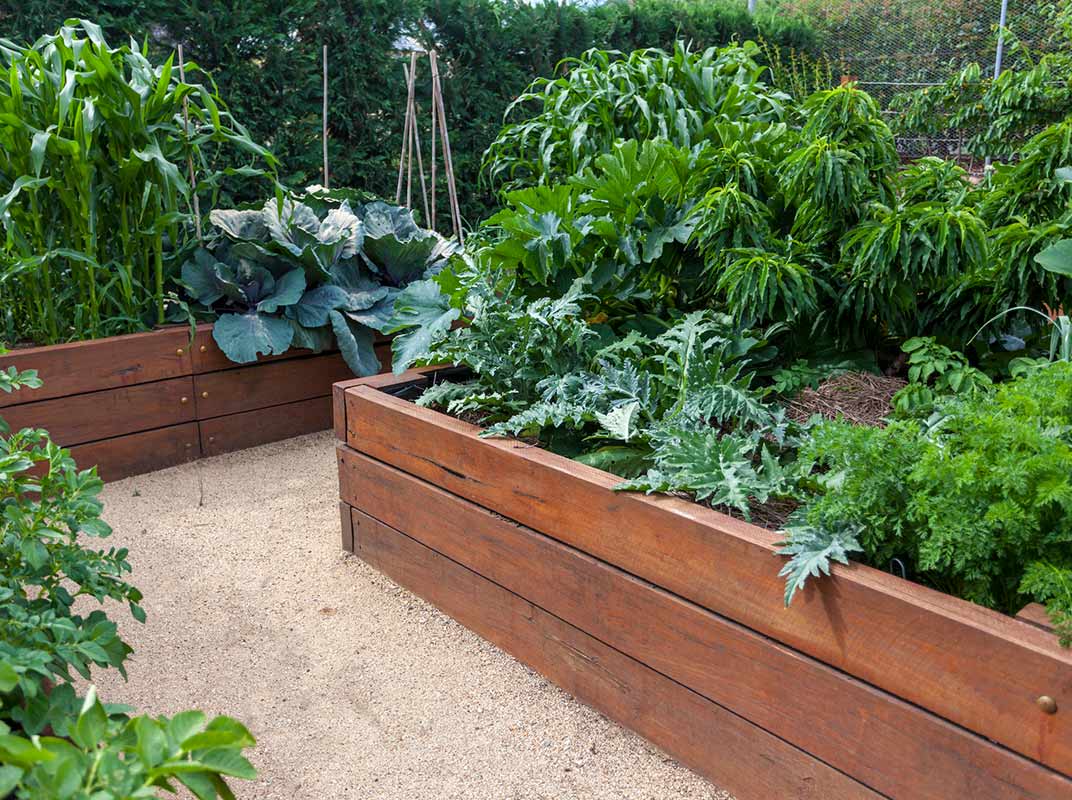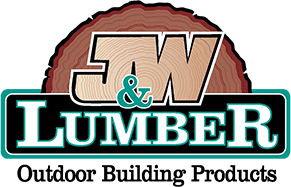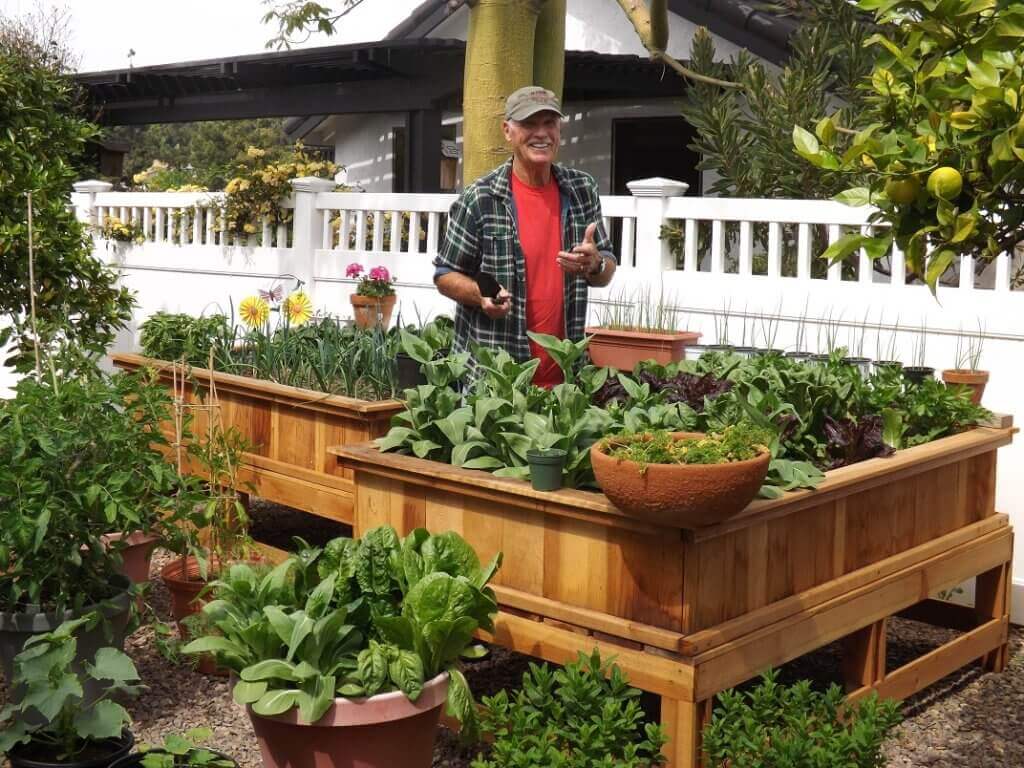
Adding a garden box is a cost-effective option to completely transform your outdoor space. From neat rows of vegetables to beds bursting with flowers, garden boxes are a functional outdoor feature that can also serve as an attractive focal point for your home.
Garden boxes are a terrific DIY project for a first-timer or an experienced gardening pro; however, before breaking ground on that new garden bed, here are some important questions to ask.
1. What will you grow?
The first step in the garden box process should be choosing what will be IN your garden box or, your “plant plan.” This crucial step will help you determine the placement, materials and shape of your new garden box. Carefully consider what you will grow before you choose your box location. Here are some good questions to ask:
- How much sunlight will my plants need?
- Which areas of my yard have sunlight, when and for how long?
- How big is the root area for the plants I want?
- How much space does each plant need?
- What’s the watering frequency for the plants I want?
PRO TIP: Flowers & Succulents
The shade needs for non-edible plants can vary greatly from species to species. Decorative annuals like petunias, sunflowers and marigolds create a colorful display and thrive well direct sunlight. Meanwhile, perennial flowers like hydrangeas, lilies of the valley and Lenten roses are perfectly suited for the Southern California climate and do well in shadier areas of a garden.
PRO TIP: Fruits & Vegetables
Root vegetables, onions, tomatoes and leafy greens are common edibles that can easily be grown in garden boxes. To avoid chemicals leaching into the soil, go with natural woods for your box, such as Cedar or Redwood.
Once you know what you’re planning to grow, it’s time to move onto the next step.
2. Where will you put your garden box? And what size?
Determining where to put your DIY garden box will depend on your “plant plan” from Step 1. Some plants need full sunlight, some require a shady area and others can handle a mix of both. Choose a place in your yard that will be best suited for your “plant plan.” To fully gauge sunlight exposure, check your location during morning, afternoon and evening. Choose a level area with access on all sides for easier maintenance of your plants. You may also want to consider proximity to your garden hose or water source from your house.
Measure the area where you plan to install your garden bed to get a sense of the size and shape that will suit your space best. At J&W Lumber, we sell attractive, easy-to-assemble garden box kits in multiple sizes, including 2’x4′, 2’x6′, 4’x4′, 4’x6′ and 4’x8’ (all 12” tall) plus leg kit options to raise your garden to new heights. Available at any of our J&W Lumber store locations or at our online store, our ready-made garden box kit comes with all necessary materials, including high-grade redwood and hardware, which makes this step easy and economical.
If a premade kit doesn’t offer the right size for you, garden boxes are simple to adjust to the size and shape you desire. Your garden box doesn’t even have to be square or rectangular. You can install a triangular box to fill up a corner space or line up multiple boxes to partition off a section of your yard. You can even stack or double up to create a multi-level garden box. If you have ideas for a non-traditional shape or a size not sold in a kit, bring your plans down to the specialists at J&W Lumber and we’ll help you measure and price the materials you will need.
Once assembled, you can choose a stain to finish the garden box and protect the wood. At J&W, we carry many different colors of stain to add another creative touch.
3. What type of box do you need?
Do you want your DIY garden box with or without legs? Should it sit on the ground or be raised? There are benefits to each.
Legs:
We offer high quality redwood leg kits at J&W Lumber retail locations or our online store. These kits elevate the garden bed 30” high, providing greater protection from animals like groundhogs or rabbits. Raised beds also offer easier access and reduce the need to bend over to maintain your garden.
Directly on ground:
If you’re planting directly on the ground, we recommend installing wire mesh below the garden bed to keep out burrowing animals.
Sitting on concrete:
If your box will sit on concrete, lay down wood slats to help keep the soil within the box. It’s also important to see how your water will flow or be retained within the box since it wont be absorbed by the ground below.
PRO TIP: Make sure the surface of your install site is level. Tilted garden boxes can cause water to collect in one or more corner(s), drowning some plants while depriving others of sufficient moisture.
4. What materials should you use?
Garden beds can be as decorative as you like, providing an eye-catching accent to your home. It all depends on the materials you use to build your box frame. The materials you choose will affect the look of your box, as well as how much maintenance is required.
Based on our 60+ years of providing the high-quality lumber and outdoor building supplies in Southern California, here are the materials that we have found work best for garden boxes:
- Redwood
- Cedar
- Pressure-treated lumber: This material should not be used for edible gardens but may be an option for an attractive, long-lasting flower bed.
- Composite materials: Another eye-catching, long-lasting option may be to use composite materials, such as Trex decking boards. Trex boards are designed to look just like lumber but require zero maintenance. Trex boards are available in multiple colors and finishes and are in stock at all of our locations.
PRO TIP: Install a wider board along the edge of your garden box to create a seating area or a place to set your gardening tools.
Garden boxes are one of the easiest DIY lumber projects to complete on your own. By keeping all of these pro tips close at hand, and adding your own personal touches, you can build a beautiful, functional garden bed that will enhance your yard for years to come.
J&W Lumber Specialists are a phone call or visit away. We’re happy to answer any of your questions about your next garden box project. Happy building!

